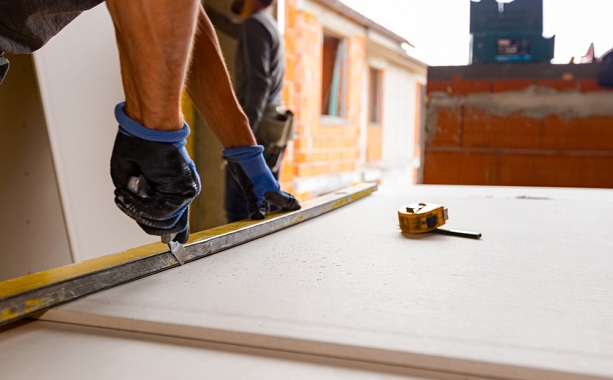How to cut plasterboard effectively
While it is strong, plasterboard is an easy material to cut. The aim is to achieve the straightest and, more importantly, the cleanest cut. You will need to cut through the gypsum core and two lining layers.
Let’s look at the best process for cutting plasterboard.
Prepare the area
A clear, unobstructed area is vital before you begin cutting your plasterboard. You will need plenty of space and a flat surface to cut your plasterboard. Cutting your plasterboard will inevitably create a lot of dust, so remove any furniture from the room and lay out dust sheets on the floor.
Choose your fixing methods
There are four methods used to fix plasterboard to a wall. You can either:
- nail the plasterboard to the studs to cover a large area quickly
- screw the board to studs or battens for a more secure installation
- glue pre-insulated plasterboard to a wall
- use the dot and dab method. Apply plasterboard adhesive to the back of the sheet and press it firmly into place. It’s a quick, easy, and cost-effective option for smaller areas. The dot and dab technique is implemented when there is no stud wall to screw or nail the plasterboards.





